After years of historical 4X games, Endless Legend 2 is a much-needed flight of fantasy for the genre
My hands-on reveals a return to Amplitude doing what it does best.
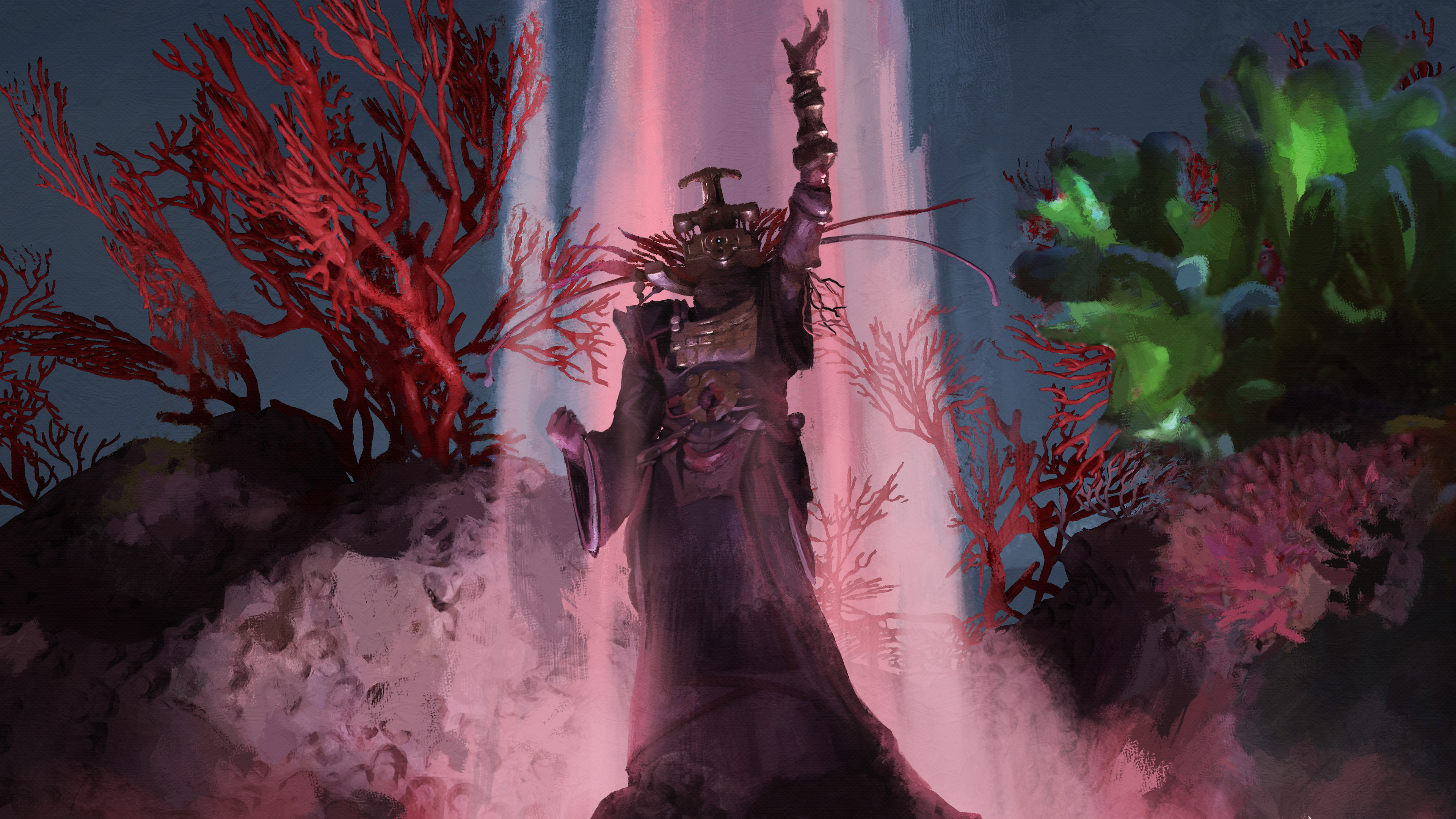
Coral, coral, coral, as far as my mechanical eyes can see. I didn't know quite what to expect when building camps to claim territories and plonking down coral spreaders in my role as leader of a faction of part-mech, part-tendrilly oddities, but it certainly wasn't anything so drastic as half the world becoming carpeted in purple sprouting flora (or is it fauna?) in a matter of hours. As much as I'm in support of regrowing the reefs and so on, I can't help but feel that here on Endless Legend 2's world of Saiadha I'm propagating some kind of fuschia-flavoured ecological disaster.
But from the perspective of the Aspects faction, this is a (ahem) core-al mechanic; it improves tile yields, heals my armies, and acts as a super-highway by letting units move faster across the map. The coral weaves towards water bodies where it spreads faster, and towards villages made up of wonderfully weird minor factions that might be eel-beings, dudes who fly around on giant owls, or vicious dark unicorns blustering for a fight. The coral automatically pacifies these factions, bringing you a step closer towards assimilating them into your empire. It's even a tool in diplomacy (a speciality of the Aspects), where you can offer the benefits of coral to friendly factions who choose to embrace it.
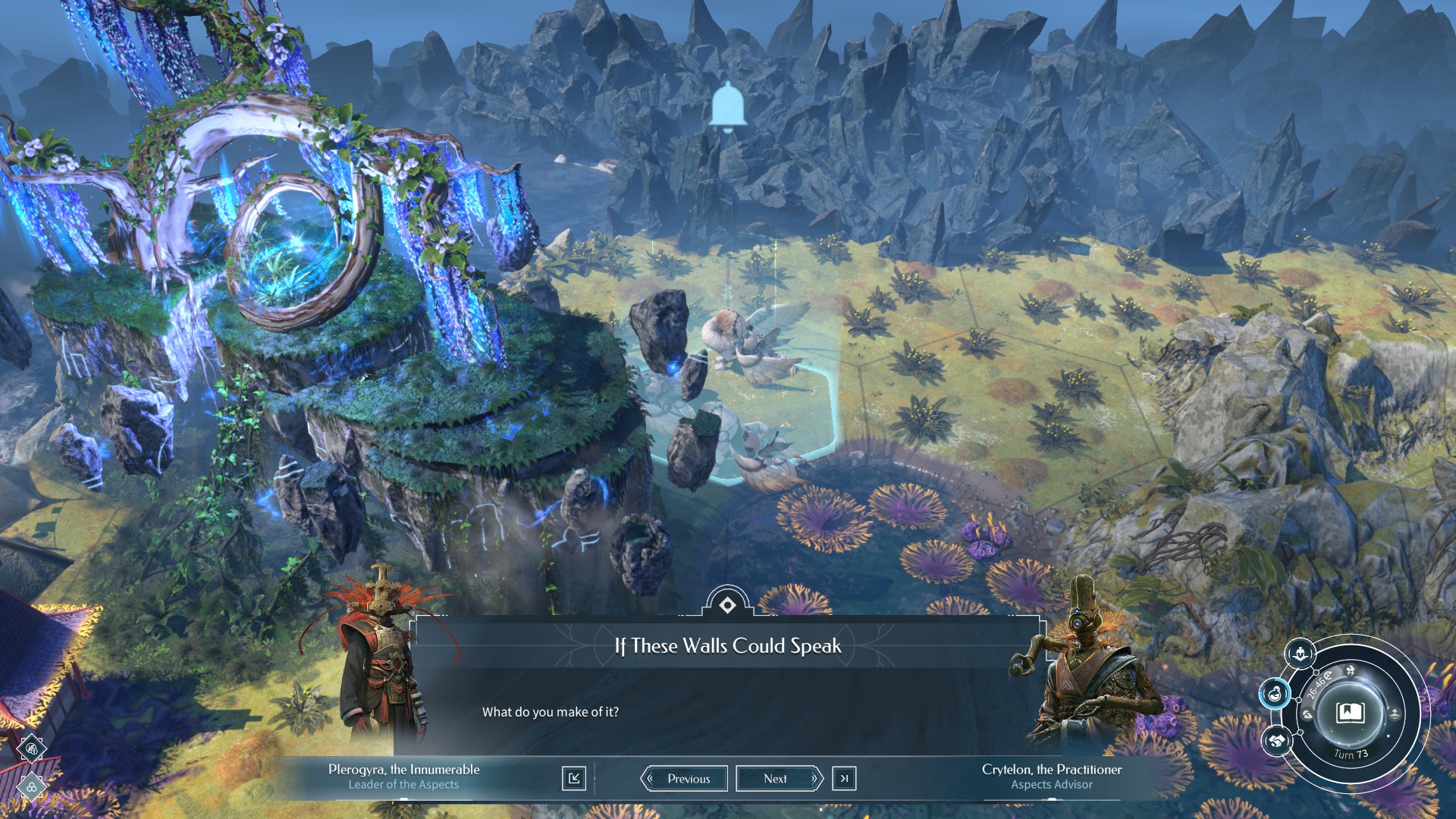
True to the Endless series' philosophy of asymmetry, the great thing about all the above is that it's entirely unique to that one faction, and that each of the game's six factions—some new, some returning—will offer totally different ways to play.
In the preview build, I also had a run as the Kin of Sheredyn: militaristic zealots (think Sardaukar from Dune) who count fervour-fuelled iron giants among their ranks and build up 'zeal' when you improve cities' fortifications, which can then be used to issue commandments that range from creating divine populations in your cities to smiting enemy armies on the campaign map. The Kin could well be the most vanilla of Endless Legend 2's six base-game factions, though that's not saying much in a series that lets you lead factions of corpse-eating plague insects, creepy faceless cultists, and fungus-spreading mushroom folk.
Of course, all this talk of new factions and their wild mechanics is more for series' fans, so let's rewind. At its core, Endless Legend (and now 2) is a 4X turn-based strategy game where you build cities, research technologies, raise armies, and lock horns with other factions racing towards one of the multiple victory conditions for the game. In the case of Endless Legend 2, these victory conditions are your classic score and domination victories (yes, boring), but there are also seven as yet unrevealed 'narrative' victory types.
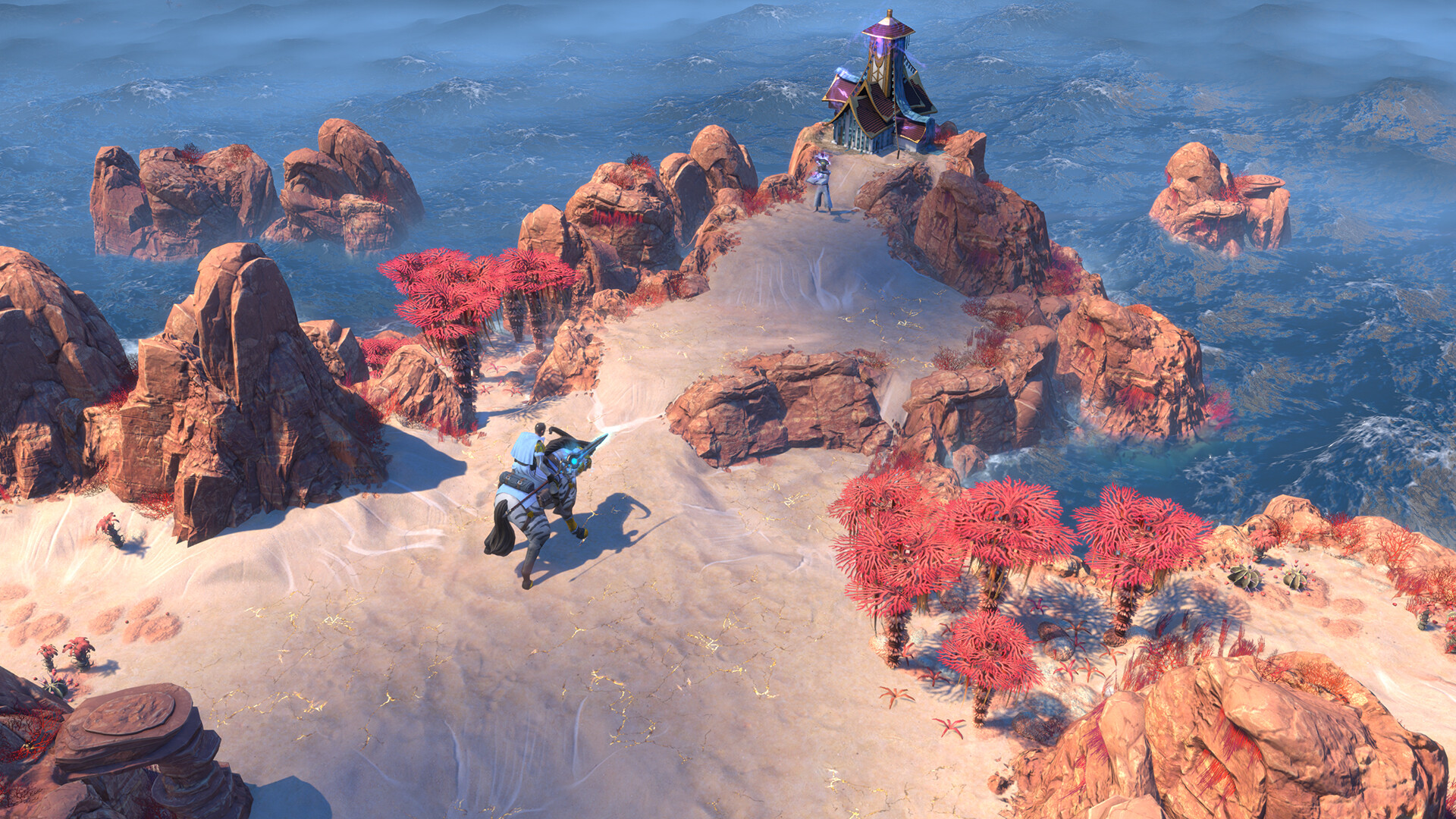
The Endless series is a prime example of how great writing and storytelling can be integrated into the 4X format.
This is a welcome change in direction from its predecessor, which had one 'Quest' (or narrative) victory amidst the usual make-the-numbers-go-up Economic, Diplomatic, Scientific yada-yada victories that have been the bedrock of 4X games for decades. The Endless series is a prime example of how great writing and storytelling can be integrated into the 4X format, so it's apt that its victory conditions should integrate with the series' strengths rather than fall back on tired genre habits. Granted, we don't know how these will look yet, but the foundation is in place.
Speaking of foundations, Endless Legend 2 adds a few new twists to the original's excellent city-building (which did the whole 'multiple-tile cities' thing well before Civs 6 and 7). The sequel keeps much the same approach of letting you build sprawling cities across multiple tiles, but now you need to first build, yes, foundations in tiles adjacent to your existing city ones. Then you build your districts on top of those, and district-specific improvements (such as observatories to improve laboratories, or Legionnaires Workshops to turn defensive Strongholds into mini-factories) within those.
The biggest gaming news, reviews and hardware deals
Keep up to date with the most important stories and the best deals, as picked by the PC Gamer team.
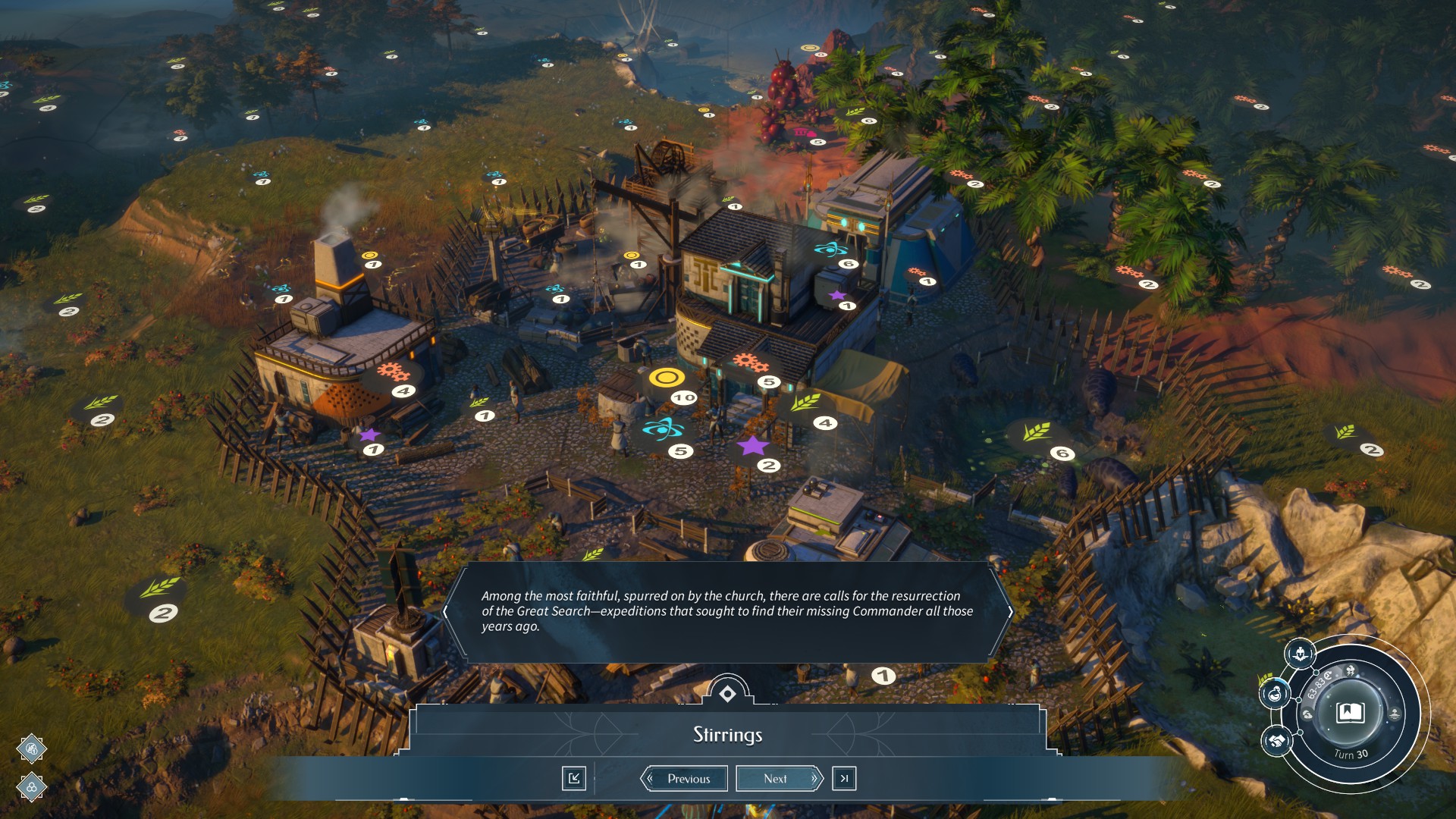
An interesting new hook is that you first need to build a camp in a region to claim it. After that, you can expand the camp into a city using Influence, or you can spend less and attach it to an existing city instead. This then turns the camp into a ministry, which acts as a kind of secondary city center for the existing city, letting you build new districts around it and funnel a whole new region's resources towards the existing city. In my time with the demo, I had two cities spread across three regions each where I'd previously have needed six cities, which is a neat way of keeping down the urban micromanagement while still giving you that satisfying sense of expanding your empire (and giving you the option to play tall by building out something akin to super-cities or Japan-style prefectures).
Endless Legend 2 is set on the world of Saiadha, a lush planet strewn, much like the original game's world of Auriga, with resources, ruins, and other remnants of the galaxy-spanning empire known as the Endless. And like Auriga, the world subjects you to extreme natural cycles that you'll have to adapt to.
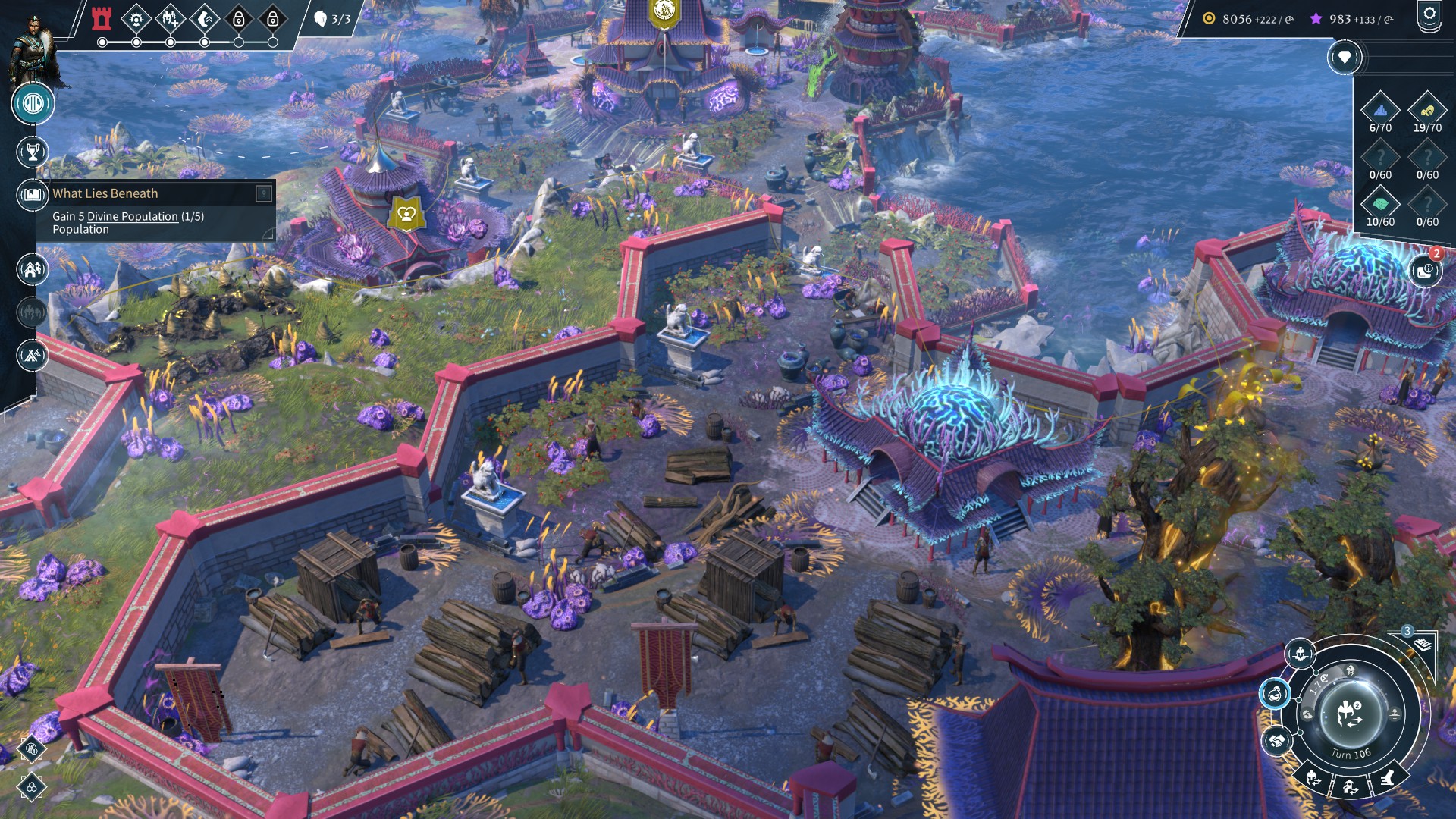
Where Auriga was a dying planet steadily falling into an everlasting winter (resulting in rather tedious seasonal penalties that slowed the game down to a slog), Saiadha is shaped by an extreme planet-wide tidal cycle known as Tidefall. First the monsoons hit, causing minor factions to get more aggressive and unit visibility to decrease, but the real magic happens when the waters recede to reveal new lands, with more and more land getting revealed with each Tidefall cycle, keeping exploration at the forefront until much later in the game.
During my first Tidefall, the land within my territories expanded to reveal a precious deposit of Glassteel, as well as several previously submerged fortresses. Led by my hero archer, levelled up from skirmishes with demonic unicorns and kitted out with upgraded gear, I marched my armies there to take on the new threat. Like in the original game, battles take place on a dedicated battle screen (or you can choose to auto-resolve). There's a decent level of depth here, with high ground, special tiles, deployable special abilities, adjacency bonuses and plenty of possible upgrades for your units.
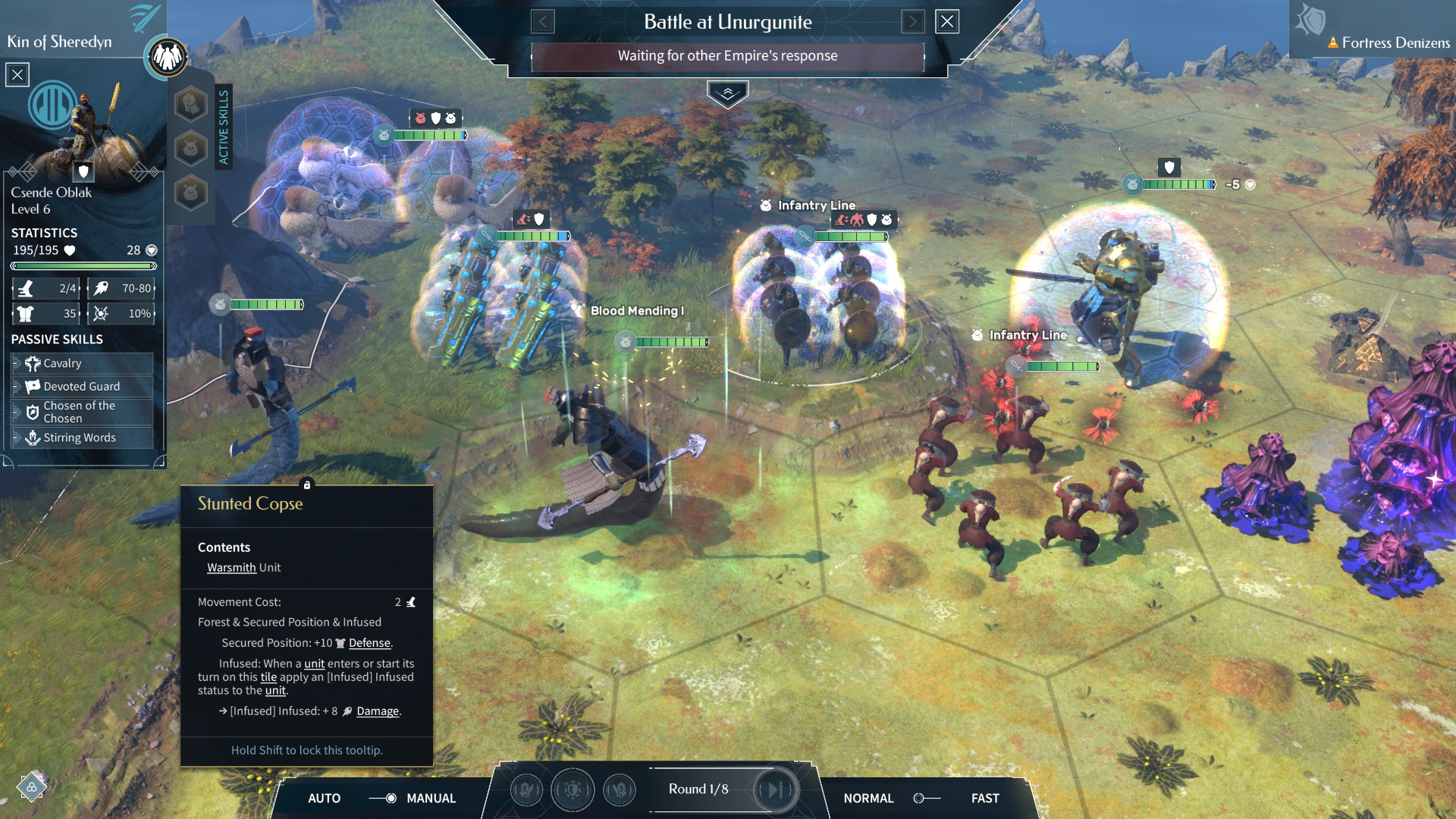
There are loads of great touches here that remind me why I'm a fan of Amplitude's work.
The problem at this early stage is that the AI's just not up to these battles. Fortress encounters are ostensibly tougher than your regular skirmish, yet I tore through each one like a Spartan legion dispersing a shambolic peasant uprising. Yes, higher difficulty settings will load the numbers in the enemy's favour, but that won't make battles fun while the AI remains tactically inept; of course, Amplitude has plenty of time to patch this up, and I hope they do.
Beyond that, there are loads of great touches here that remind me why I'm a fan of Amplitude's work, some of which carry over from the original game. There's the resource marketplace, for instance, with a proper supply-demand economy where individual resource prices go up and down depending on activity.
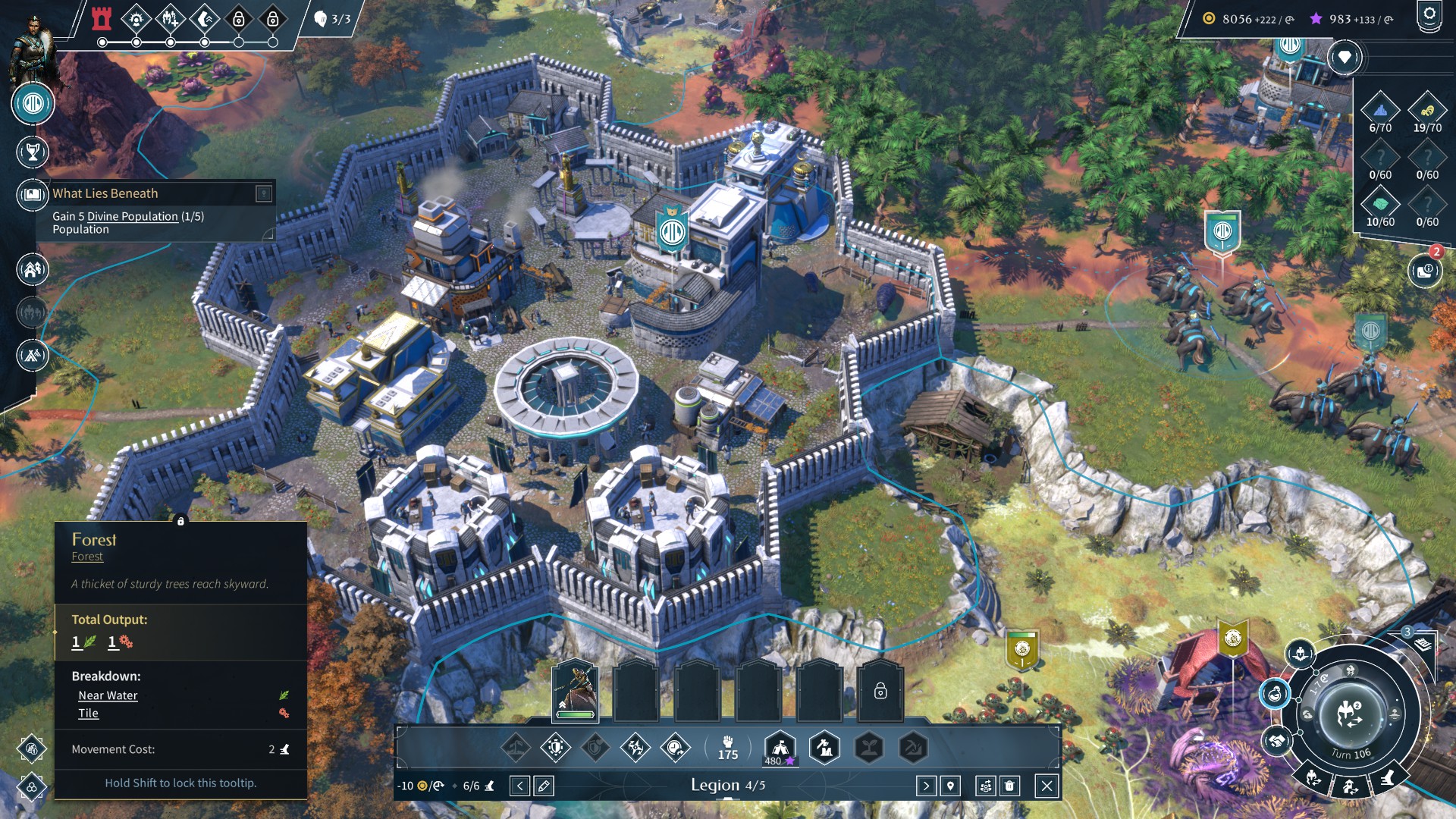
I also love Endless Legend's approach to cultural integration, where through bribery or diplomacy you bring disparate tribes under your wing and see that reflected in your social makeup. So I may be leading the Kin of Sheredyn, but on my empire's council I have Liara from a faction of courier centaur-elves known as the Consortium, while mighty owl-riders from Hoy and Ladhran have basically become the Royal Air Force of my military.
Of the new stuff in Endless Legend 2, the personal relationships system looks promising, letting you nominate a friend and companion (lover, essentially) for your hero. Give them a companion, and suddenly two 'Havens' (see: love shacks) pop up randomly in your empire, which grant bonus yields. Your heroes will also make enemies over time, and even a 'nemesis', who will yield bonus rewards if beaten in battle.
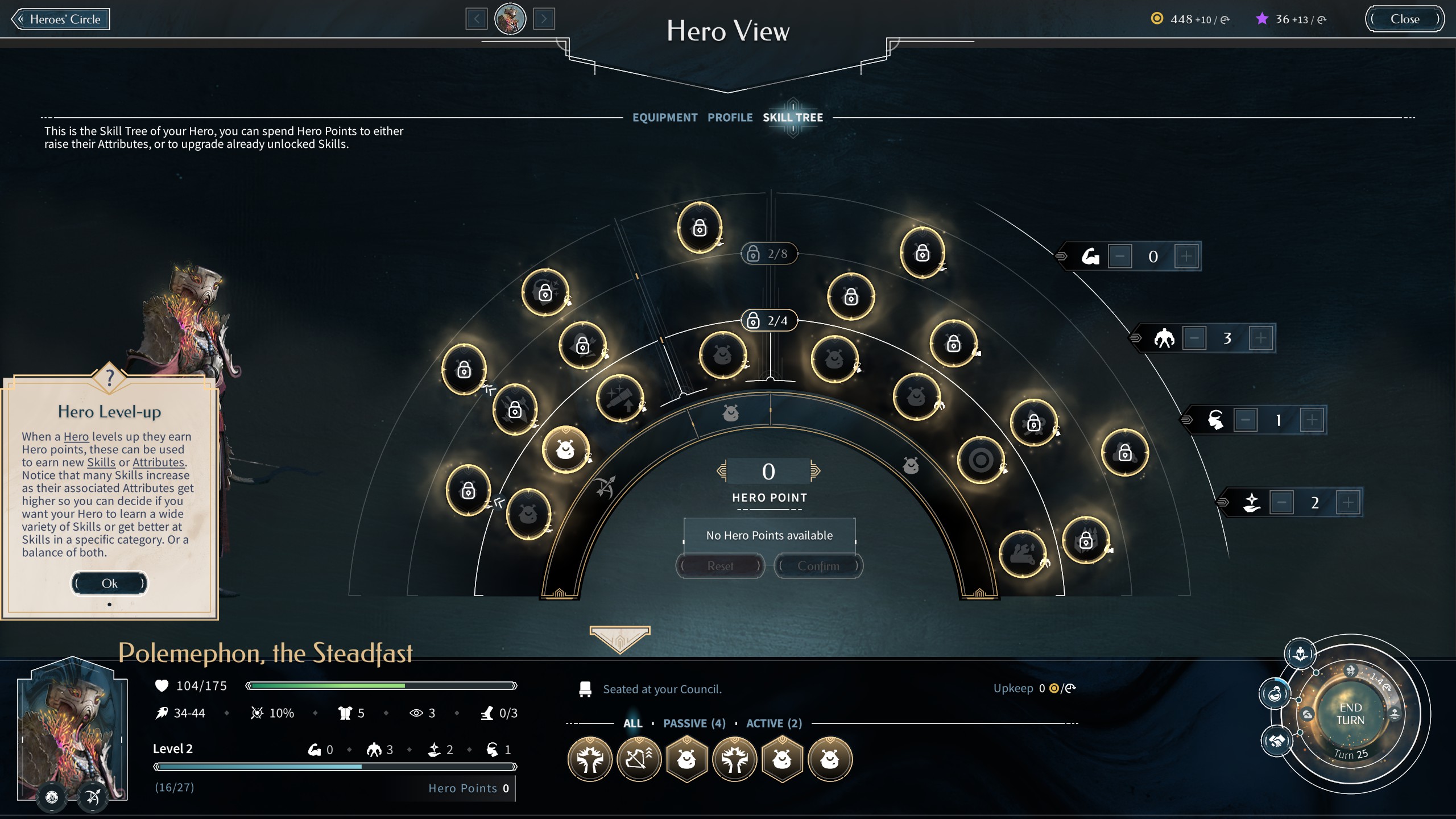
It's great to see Amplitude let loose again after their forays into history-spanning Civilization territory with Humankind
None of this feels very fleshed out yet, but that's what Early Access is for; I'd love to see this stuff be affected by narrative events and choices or by fighting together in battle, with relationships between characters changing dynamically over time rather than you just nominating who's shacking up with who.
Above all, it's great to see Amplitude let loose again after their forays into history-spanning Civilization territory with Humankind (which was by no means a bad game, but whose real-world trappings inevitably restricted the studio's freedom to go creatively wild with world-building and storytelling). The sea-level concept of Endless Legend 2's new world already feels like a massive improvement over the drab winter one of its predecessor, while a focus on narrative victories and the seedling of a relationship system show signs that Amplitude is trying to do away with convention and find more ways to fit storytelling into the 4X framework.
At a time when developers in this venerable genre have become a bit bogged down in the whole etch-a-sketch human history-spanning theme (shout out to Solium Infernum for bucking the trend), Amplitude's picked a great time to sweep us off once more to its singular sci-fantasy world, and from what I've played so far, it's going the right way about it.
Robert is a freelance writer and chronic game tinkerer who spends many hours modding games then not playing them, and hiding behind doors with a shotgun in Hunt: Showdown. Wishes to spend his dying moments on Earth scrolling through his games library on a TV-friendly frontend that unifies all PC game launchers.
You must confirm your public display name before commenting
Please logout and then login again, you will then be prompted to enter your display name.

